Archived Mold Remediation Blog Posts
Best Practices for Mold Remediation in Sandwich Properties
11/5/2024 (Permalink)
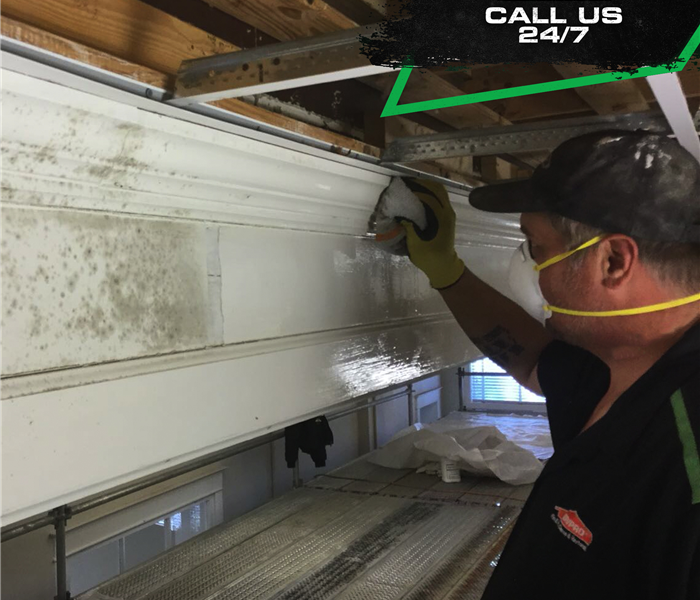 If you have a mold issue, SERVPRO of Upper Cape Cod and The Islands can inspect, assess, and remediate your property. Here to Help®.
If you have a mold issue, SERVPRO of Upper Cape Cod and The Islands can inspect, assess, and remediate your property. Here to Help®.
SERVPRO® Ensures Safe and Effective Mold Removal in Sandwich
Sandwich town, in Barnstable County, was earlier inhabited by American Indians. Early industry revolved around agriculture, fishing, and trading. Sandwich's public school system has several institutions, including Forestdale, Oak Ridge, STEM Academy, and Sandwich High School. There are several attractions in the town, including Heritage Museums and Gardens and the Wing Fort House. A few famous individuals from the town include Major League Baseball pitcher Ed Conley and television personality Duff Goldman. Residents enjoy annual celebrations like Glassblowers' Christmas, held at the Sandwich Glass Museum. This event displays handmade glass ornaments and festive decorations.
Mold remediation in Sandwich properties is typical when there is a water intrusion incident, such as a leak or flooding event. It can impact different parts of a home, including the basement and crawlspaces. Dealing with this menace involves:
- Addressing the root causes.
- Cleaning visible mold residues, as the growth might re-occur.
- Ensuring long-term prevention.
That is why having a mold remediation team like SERVPRO can help achieve all these successfully. We begin by checking if a mold problem exists on the premises. Our crews check for visible contamination and trace moisture pathways. Another clue is a strong, musty odor, which indicates water damage and mold.
Mold remediation actions
- Building containment chambers
- Removing contaminated materials
- Controlling moisture
- Cleaning and disinfecting surfaces
Humidity control is a significant aspect of mold remediation. We test for hidden moisture on structural materials using moisture meters and thermal imaging cameras, as these are critical in locating water damage. SERVPRO crews fix leaks and may help upgrade your home's ventilation system. We also emphasize setting up dehumidifiers and monitoring indoor humidity levels to help keep moisture in check, reducing the chance of mold coming back.
Removal of Mold Contaminated Materials and Mold Residues
Certain mold-affected materials cannot be restored, including porous materials like drywall, fabrics, carpeting, and insulation that are extensively mold-infested. As such, our crews remove and wrap them in 6-mil plastic sheets for proper disposal. For mold residue, we use;
- HEPA vacuuming if the surface is dry
- Damp wiping with a detergent solution for mold growing in a layer of soils
- Wire brushing for semi-porous materials like wood
With advanced tools and thorough cleaning, SERVPRO of Upper Cape Cod and The Islands can ensure long-lasting mold remediation results. Call us at (508) 888-5985. Faster to any size disaster™.
Top Tips Reducing Mold Growth in the Kitchen
5/10/2019 (Permalink)
Top Tips Reducing Mold Growth in the Kitchen
In the kitchen:
- Use exhaust fans to move moisture outside (not into the attic) whenever you are cooking, washing dishes, or cleaning.
- Turn off certain appliances if you notice moisture on windows and other surfaces.
- Check for leaks around the kitchen sink, refrigerator ice makers, and other sources of water. Repair if necessary.
- Empty and clean refrigerator drip pans if necessary.
- Put a plastic cover over dirt in crawl spaces to prevent moisture from coming in from the ground. If there is standing water or the soil is wet, dry it out with fans before covering the floor.
- Be sure crawl spaces are well ventilated by using fans and having vents installed in outside walls if necessary.
- Consider painting concrete floors and using area rugs instead of wall-to-wall carpet in basements. If you plan to install carpet over a concrete floor, it may be necessary to use a vapor barrier (plastic sheeting) over the concrete and cover that with sub-flooring (insulation covered with plywood) to prevent a moisture problem.
- Have your basement floor checked for leaks and have them repaired if necessary. Water can enter your home by leaking or by seeping through basement floors or walls.
- Make sure gutters are working properly and that outdoor landscaping causes water to run away from -- not toward -- the house.
- Do not finish basement walls with insulation and wall board unless your basement is very dry.
Source: webmd Jan 2019
Tips for Reducing Mold Growth in the Bathroom and the Laundry Room
4/22/2019 (Permalink)
Tips for Reducing Mold Growth in the Bathroom and the Laundry Room
In the laundry room:
- Vent your clothes dryer to the outside.
- Make sure the vent is clear of obstructions, such as lint, and that there are no holes that leak air. If the vent duct is damaged, replace it with a metal duct. Have the duct cleaned at least once a year.
- Avoid leaving damp clothes in the laundry basket or dryer. Wash and dry them promptly.
In bathrooms:
- Use exhaust fans to remove moisture to the outside (not into the attic).
- Use area rugs, which can be taken up and washed often instead of wall-to-wall carpeting.
- Check for leaks around basins and tubs and have them repaired if necessary.
- Open a window when showering.
- Avoid leaving damp towels on the floor or in laundry hamper.
Source: webmd Jan 2019
Mold Damage from a Leaky Chimney| SERVPRO of Upper Cape Cod and the Islands
8/20/2018 (Permalink)
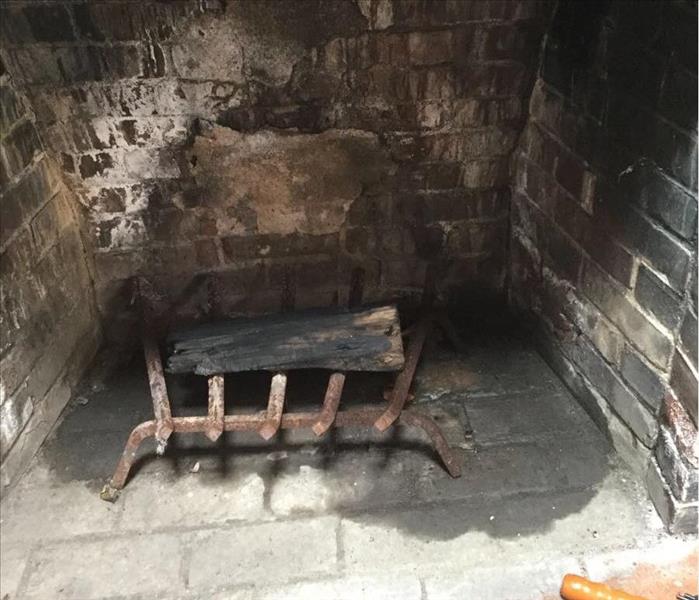 SERVPRO of Upper Cape Cod & the Islands offers effective solutions for mold remediation through an experienced and skilled team.
SERVPRO of Upper Cape Cod & the Islands offers effective solutions for mold remediation through an experienced and skilled team.
Recently we responded to a mold issue on Nantucket. The homeowner who lives full-time outside of Massachusetts had planned her annual trip back to Nantucket over the Summer. Upon arriving to the property with her children in tow she immediately smelt the odor of mold and was very concerned for the health and well-being of herself and kids all of whom were highly allergic to microorganisms.
There Are Three Elements Needed for Mold to Grow
- Nutrients such as the cellulose structure of walls, cardboard or wood are all considered food sources common in homes that help mold spores thrive and multiple.
- Inside Moisture or humidity levels above 60%
- Time is the last factor, it only takes 24 hours of the perfect conditions for mold to begin to grow.
It was obvious that it was a more serious issue than just a closed-up home. The high levels of moisture were extensive in the home causing a strong bacterial odor from the mold spores not visible but nonetheless in the air. She wanted work done immediately because they could not stay at the house because of the concerns she had of health risks for the family. We responded right away and set up dehumidifiers and air scrubbers to begin the drying and air scrubbing process at the dwelling. The challenge came when it was discovered that the source was a leaking chimney. After a discussion regarding this fact, the homeowner knew she needed to hire a masonry person to fix the source of the water intrusion to the property, the chimney in this case. She also disclosed that she was in the process of selling the property and wanted to make sure that the mold was completely eradicate for any new owners.
As we began our mold remediation we knew there was going to be a probable with reducing the humidity level in the home enough to make a real difference and began to construct containment barriers up while waiting for the chimney issue to be dealt with by the masonry crew. The days turned to weeks waiting for the chimney to be repaired. Finally, with the source of water intrusion fixed we were able to finish the process of our mold remediation.
Even though the efforts of the crew to sanitize the home and maintain the humidity levels between 40-60% were inhibited by the fact that the source of water needed to be resolved coupled with the fact that there was no place to put the content because the homeowner did not have any space for a storage pod on the property they decided to seal off one room in the house to store the content. Not every job is easy to accomplish but we are always dedicated to crossing the finish line for our customers. If you have a mold issue and need help we are just one phone call away.
SERVPRO of Upper Cape Cod and the Islands is trained and certified to eradicate mold for you in your home or business.
How to Decrease Your Mold Exposure
8/15/2018 (Permalink)
How to Decrease Your Mold Exposure
How can people decrease mold exposure?
Molds grow best in warm, damp, and humid conditions, and spread and reproduce by making spores. Sensitive individuals should avoid areas that are likely to have mold, such as compost piles, cut grass, and wooded areas. Inside homes, mold growth can be slowed by controlling humidity levels and ventilating showers and cooking areas.
Specific Recommendations:
- Keep humidity levels as low as you can—no higher than 50%–all day long. An air conditioner or dehumidifier will help you keep the level low. Bear in mind that humidity levels change over the course of a day with changes in the moisture in the air and the air temperature, so you will need to check the humidity levels more than once a day.
- Use an air conditioner or a dehumidifier during humid months.
- Be sure the home has adequate ventilation, including exhaust fans.
- Add mold inhibitors to paints before application.
- Clean bathrooms with mold killing products.
- Do not carpet bathrooms and basements.
- Remove or replace previously soaked carpets and upholstery.
What areas have high mold exposures?
- Antique shops
- Greenhouses
- Saunas
- Farms
- Mills
- Construction areas
- Flower shops
- Summer cottages
- Lake Houses
Source: cdc.gov
Causes and Prevention for Mold Growth in Cabinets, Kitchen or Closets
7/26/2018 (Permalink)
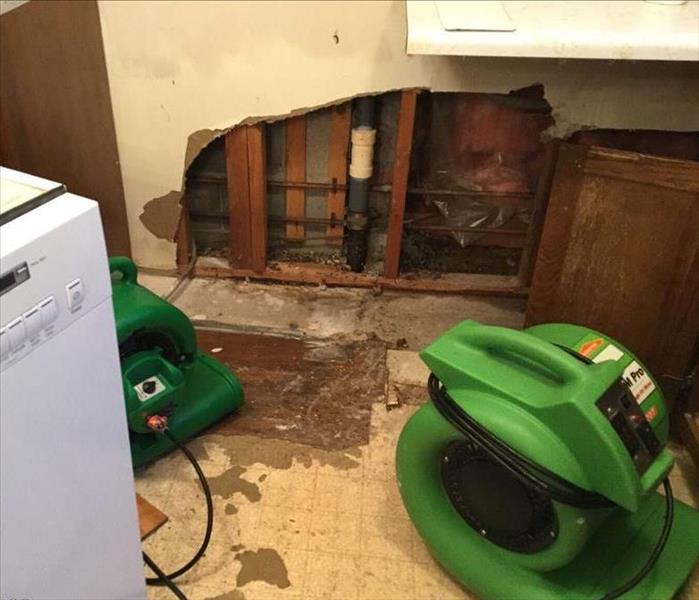 SERVPRO of Upper Cape Cod and the Islands is a leading name for residential and commercial mold remediation due to water damages.
SERVPRO of Upper Cape Cod and the Islands is a leading name for residential and commercial mold remediation due to water damages.
Mold will grow rapidly, taking over almost any surface in your home, if you let it. Not only is it ugly and unappealing, it can pose serious risks that are detrimental to your health. Mold is commonly found in the least favorable places. This can be your cabinets, kitchen or closets. We SERVPRO of Upper Cape Cod and the Island have seen mold in just about every place you can think of, and we’ve been able to scour it away every time.
Common Causes
Mold thrives best in a combination of three atmospheres; warm, dark, and moist. It lives off of wood, plants, cotton, paper and other similar materials. With just enough oxygen and little ventilation, mold might spread like wildfire. It's upsetting when this very thing happens in your closet. It will rot away the wood, and even worse it will spread to your clothing.
Moisture Level/Condensation
Moisture is a primary factor acting as a catalyst for mold growth. Wardrobes placed near windows or directly against walls tend to hold more humidity. This makes it the perfect place for mold growth, because it has minimal ventilation. To prevent conditions for mold growth, apply proper airflow to reduce moisture.
Soggy Clothing
Some people think it is a good idea to hang up their clothes to dry. There are a multitude reasons behind why they may choose to do this. However hanging your clothes in a dark and close closet is basically inviting mold to grow there. Clothing will take much longer to dry, without airflow or sunlight and time is a component in mold growth. All in all, hang wet clothes in open, well-lit spaces, for efficient drying and mold prevention.
Prevention
Mold growth needs to put in a check to avoid health problems. It is better to seek out mold removal services right away. Mold growth can persist and affect large areas of the house. Some of the ways to prevent mold growth are:
Special Attention
Give your wardrobe a little special attention every now and then when you are cleaning. The most effective method is to mix bleach with water to wash mold away. Keep in mind, a bleach may be a little to harsh for wardrobes made up of wood. In such a situation, try using a gentle cleaning solution.
Prevention Methods
One idea for a gentle cleaning solution is to mix half white vinegar and half water. This is acidic enough to remove regular mold and even tough black mold. After removing the mold, wipe the area down with undiluted vinegar to kill spore that may be hanging on. Some other preventive tactics are:
- Keep your wardrobe a few centimeters from the wall to avoid condensation.
- Avoid hanging damp clothes in the closet.
- When drying clothes, give a space between items to avoid spore growth from one item to another.
- Go for wire shelves instead of solid shelves to have better air circulation.
Mold removal is necessary for your health and your property. Prevention and restoration are two ways to deal with it. To get effective results, call in the pros from SERVPRO of Upper Cape and the Islands. Our trained restoration technicians have specialized equipment to tackle damages of all sizes. To learn more about our water, storm, or commercial mold remediation; give us a call at (508) 888-5985.
A Few Short Guidelines on Effective Mold Remediation
6/6/2018 (Permalink)
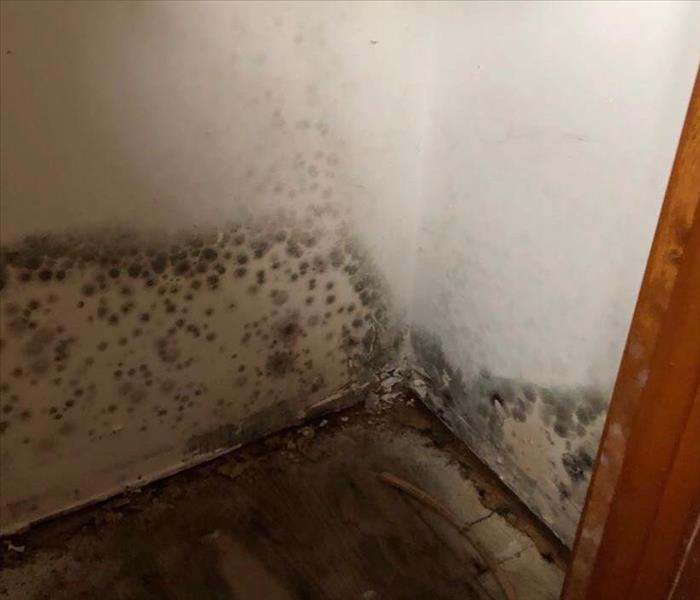 SERVPRO of Upper Cape Cod and the Islands is the leading name in residential & commercial mold remediation caused by storm/water damage or flooding.
SERVPRO of Upper Cape Cod and the Islands is the leading name in residential & commercial mold remediation caused by storm/water damage or flooding.
A List of Useful Pointers on Mold Growth and Its Remedies
Mold can grow anywhere in your home, in the form of multicellular thread like hyphae. However, it is basically found in damp building areas and materials inside the home. It contributes to poor indoor air quality. A major mold infestation is capable of putting your property and even health at risk. Therefore, it needs a quick removal from competent companies such as SERVPRO of Upper Cape Cod and the Islands.
You will be able to recognize it either through its musty smell or its fungal appearance on any probable affected area. If mold growth is left untreated, it may cause health concerns. Whereas, its removal is dependent on a number of factors including size of mold, area of mold growth, mold type and how much damage it has made to your home.
There are many sources of mold damage, and the possibilities include sewage or contaminated water, overflowing water from washing machine, leaks from plumbing, sources of air humidifiers or even poor ventilation, etc.
Whatever the source may be, mold removal is crucial to healthier and greener environment. So, inspect and cleanup your mold problem through professional help.
Fix Plumbing Leaks
As discussed earlier, plumbing leaks can be a possible cause for mold growth. It should be fixed as soon as problem is identified.
Scrub Mold Off Hard Surfaces
If you find any mold growth on hard surfaces, gently scrub it with detergent and water and let it dry.
Throw Away Absorbent Materials
There is a possibility that you might have to throw away porous materials such as carpets and ceiling tiles. Because mold can sneak into the empty crevices of porous materials, hence, it may be impossible to remove it completely.
Never Expose Yourself to Mold
Keep yourself covered with gloves, safety glasses and face mask while cleaning up mold to avoid exposure to mold spores that may give rise to a health concern.
Never Paint Mold-Stained Surfaces
Regular or black mold will cause discoloration and stains on walls. Always remember not to apply paint on stained walls. Firstly, clean up mold and let the surface dry before brushing on a few coat of paint.
Check for Poor Ventilation
One of the possible causes of mold progress is poor ventilation system. Inspect your property and check if there is a proper circulation of air in and out of your house. Any place that is rich in moisture will be a breeding ground for mold.
Seal Off Damaged Area
Don’t forget that water, mold or storm damage of this sort can spread easily if the right conditions are provided. Hence, use protective sheets to cover the damaged area, tapes to protect ducts and floor register opening.
Replace/Remove Damaged Wood
Wood is likely to provide food to mold as it soaks up water. Wipe away mold on surface and rinse with water. Let it dry.
Keep in mind that failure to completely remove mold from affected areas and materials will likely guarantee its return. It is always more effective to call in professional mold restoration companies such as SERVPRO of Upper Cape and the Islands. Our skilled crew will ensure the best restoration results to damage of any and all sizes.
For more information about water, storm, mold or commercial mold remediation; call us at (508) 888-5985.
Effective Ways to Handle Mold Issues in Residential and Commercial Properties
5/11/2018 (Permalink)
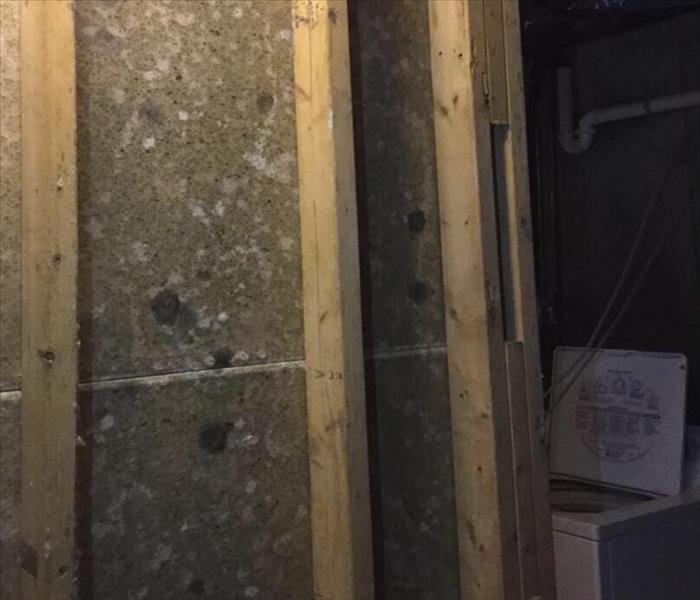 SERVPRO of Upper Cape Cod & the Islands offers effective solutions for mold remediation through an experienced & skilled team of restoration workers.
SERVPRO of Upper Cape Cod & the Islands offers effective solutions for mold remediation through an experienced & skilled team of restoration workers.
A Few Essential Things to Know about Mold Inspection and Remediation
Mold is not just a smelly nuisance. It has the capability of growing in less than 48 hours. It can discolor and damage your property including home and businesses. It can also initiate health concerns if left unchecked. If you have mold exposure then you, other residents in the house, your business customers and employees may experience a number of problems. There is only one way to get rid of these and that is mold removal. It can be a difficult task if you don’t have the right equipment with you. So, hire a professional company such as SERVPRO of Upper Cape Cod and the Islands to get mold remediation through highly trained restoration workers. They will restore your property “Like it never even happened.”
Reasons Behind Mold Growth
The most favorable place for mold to grow are areas with high moisture levels. The reason behind the moisture content may be the lack of ventilation, broken pipes or malfunctioning appliances, disasters such as flooding, plumbing problems or even water damage associated with firefighting efforts. If you find signs of water damage in your house, get it fixed to avoid letting the mold grow. Get help from our professional and experienced company to make your property mold-free.
Mold Inspection
In order to get rid of the problem, the first thing to do is identification. The best way to carry out this job is to take a visit around your property. Thoroughly check all the areas with your premises. The same strategy goes for commercial properties and businesses. Do the following things while inspecting mold:
- Make a list of the areas that are affected.
- Look behind the cabinets in kitchens, laundry rooms, powder rooms, bathrooms, etc.
- Inspect basement and attic.
- Have a look behind the cupboards. In addition to this, look into your storerooms or places that have not been opened for a long time.
Mold Remediation
Mold presence is accompanied by a musty odor. The process of deodorizing is a key consideration in the removal process. Mold remediation process is not a DIY step, you need to bring in professional mold removal crew for this task. They use specialized equipment and commercial-grade anti-microbial agents for the removal.
Here’s a four-step remediation process:
- The first thing to be done is the identification of mold. This procedure can be carried out by using moisture meters, and in advanced approaches, thermal imaging is also used. After this, protocols are designed to overcome moisture issues.
- Visual inspection of the property is done to figure out what factors may be causing the growth. The conditions are documented for designing a specific testing procedure.
- Isolation of the area is done in order to protect surrounding areas during the process of removal. The spreading of mold spores is avoided in this step.
- The affected area is dried out completely to ensure that no water content is left behind.
In homes, the places that get most easily affected by mold are bathrooms, kitchens, basements, attics, garages, and laundry rooms. In commercial or municipal buildings; bathrooms and kitchens, cafeterias, gyms with showering or pool areas, HVAC systems, and any area that has high moisture content will be an ideal breeding ground for mold. As told earlier, firefighting efforts may also give rise to mold problems. During firefighting, water leakage can happen and which in turn can create an untidy situation leading to mold growth. Contact SERVPRO of Upper Cape Cod and the Islands to avail fire damage restoration through our highly trained restoration workers.
To get more information regarding the mold removal, give us a call at (508) 888-5985.
How to Avoid Mold Growth in HVAC, Basements and Attics in Your Home
4/23/2018 (Permalink)
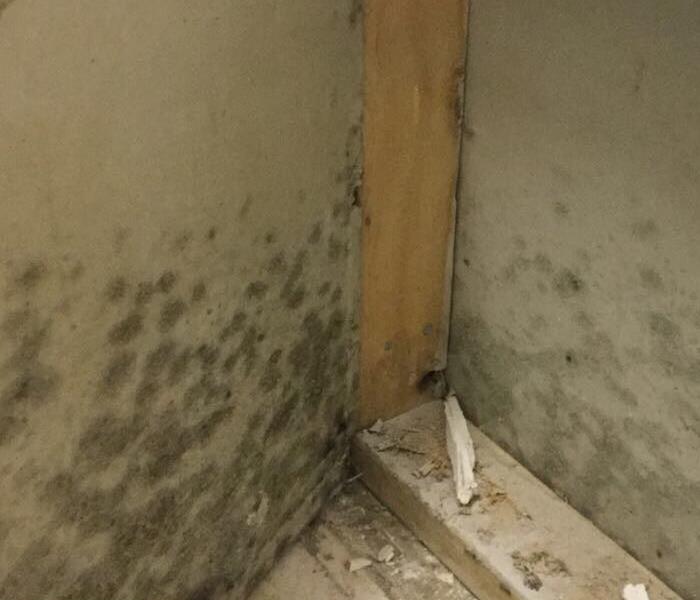 SERVPRO of Upper Cape Cod and the Islands offers a wide range of restoration and remediation services for your property.
SERVPRO of Upper Cape Cod and the Islands offers a wide range of restoration and remediation services for your property.
How to Make Your Year-Round and Seasonal Properties Mold-Free
Mold – a problem indeed if not taken care of effectively. It can grow in the different part of houses. The areas that get affected first and foremost are basements, attics and HVAC systems. The reason behind this is the lack of ventilation, air flow, and excess of water and moisture content. Water acts as a catalyst for mold growth and other factors contribute wholeheartedly as well. The good part is that mold can be treated if you pay attention and hire professional mold removal services who have years of experience.
The following are some of the ways in which we can remove mold from your attics, basements and HVAC systems:
Mold Removal from HVAC Systems
It easily grows in HVAC as moisture, organic material, and temperature within an HVAC system ranges between 32 and 120 degrees. HVAC plays a vital role in our home’s ability to contribute the dispersion of cooling, heating, and ventilation within the structure. Follow the below-enlisted tips to make your HVAC mold-free:
- Replace air filters on regular basis, once in a month
- Clean standing water on the drain pans to eliminate chances of microbes that result in mold growth
- Apply an HVAC mold inhibitor to all components of heating and cooling units while following manufacturer’s instructions
- Try to keep ducts dry along with fixing water-damaged components, and use a disinfectant in the system
- Inspect the area where air enters and make it free of a nearby dumpster waste, standing water, bird droppings, etc.
Mold Eradication from Basements
Let’s be honest, basements in most homes are usually overlooked. They are considered as an extra space for storing things, washing clothes, etc. Because of neglect, mold growth is common in basements. Always hire a professional mold restoration service to get rid of any and all growth. Here are a few steps that need to be followed in order to eliminate spore growth:
- Check the humidity level and ensure there is a place for ventilation, and/or use a dehumidifier
- Avoid growing plants in the basement and reduce congestion
- Avoid placing wood in the basement and keep water away from the home so that it may not surround the property
- Inspect that there is no water leakage in the basement and take care of spills immediately to avoid problems
- Reduce the humidifying factor and install an exhaust fan. To reduce humidity, avoid drying wet clothes and place appliance exhausts outside the house instead of in a basement to limit the amount of humidity
Limit Mold Growth in Attics
An attic space is often used for the placement of the vents to the bathrooms, kitchen and even the dryer vents to be used to discharge outside through the roof. But sometimes those vents do not make it all the way outside leaving moist air to escape into the attic causing mold to grow. The installation of furnaces, water heater and sometimes poorly insulated ceilings can also be the reason behind mold in attics. Follow this list of steps to avoid mold growth:
- Don’t place your dryer vent discharge in the attic to avoid water accumulation
- Proper ceiling insulation should be installed with a clearance to decking surface, otherwise, it will lead to mold growth
- Heating ducts should be properly insulated
- Furnaces and water heaters, if installed in the attic, should be contained in a separate room
- Plumbing vents should be extended to the roof instead of placing them in the attics
These areas need to be inspected from time to time to avoid any mold problem that may arise later on. Houses that are left closed for a long period of time, mostly the houses owned for vacation purposes, are at a greater risk of developing mold due to lack of ventilation, cleanliness, and maintenance. It is better to look for mold when you visit the house and get in touch with experienced and professional restoration services like SERVPRO of Upper Cape Cod and the Islands to get productive results for mold removal.
To inquire more about our mold remediation and HVAC cleanup services, call us at (508) 888-5985.
5 Steps for Mold Remediation
10/9/2017 (Permalink)
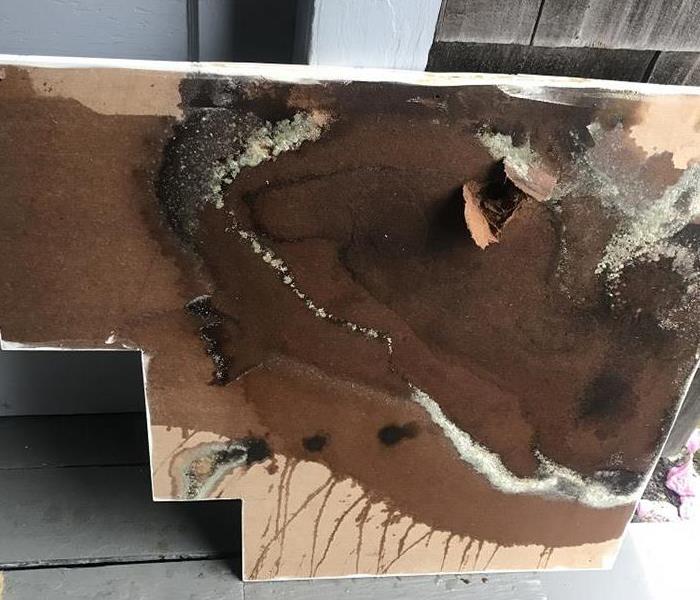 Mold removal requires professionals. Contact SERVPRO of Upper Cape Cod and the Islands to get mold remediation in Cape Cod by factory trained, expert
Mold removal requires professionals. Contact SERVPRO of Upper Cape Cod and the Islands to get mold remediation in Cape Cod by factory trained, expert
5 Steps for Mold Remediation
Mold growth is a common but very agitating experience for a homeowner since it is an aesthetic and healthy nuisance. It is a fungus that grows in filaments and extends its growth to different areas if it remains unchecked. Proper removal and precautions are a must in order to overcome it. If you are weary of mold growth and are looking for instant, effective mold removal, then you can get in touch with SERVPRO of Upper Cape Cod and the Islands for its services regarding mold remediation in Cape Cod. We offer expert and factory trained restoration crew to bring back the aesthetic appeal of your house.
Here is a list of steps that are included in mold remediation:
Evaluate Moisture Content
The key factor that initiates mold growth is moisture. Assessing moisture content in the premises is very essential. Mold is an invisible invader that covers spaces which might not be visible to the naked eye. This growth will be found behind walls, inside cabinets in kitchens, on walls in a bathroom, behind the bathtubs, and surrounding window or wall near a wardrobe. It is essential to properly check these areas to evaluate the damage. You should take pictures in order to tell the restoration technicians where the mold removal should be carried out.
Analyze Extent of Contamination
Mold growth is not specified to an area as it spreads slowly but eventually to other areas as well. The analysis of its contamination will highlight its impact, according to which its way of clean-up is defined. Mold spores are also a concern that should be kept in mind while analyzing it because proper removal will ensure complete eradication of spores. These spread in the air and can cause health effects for some individuals.
Remediate Mold Contamination
This step involves the removal and clean-up that should be done to clear the affected area. After proper calculation of area, a remediation plan is designed and implemented according to the size of the area whether it is small or isolated. If you are looking to get effective mold restoration in Cape Cod, employ the services of SERVPRO of Upper Cape Cod and the Islands to restore the beauty of your house.
Tips for DIY Cleanup Process
The following are a few tips that are utilized for better cleaning of mold:
- Repair any and all water leakages as this will fix the moisture content to prevent the growth of mold
- For isolated areas, cover the surrounding door and window if the affected area is small, but if the area is large, then cover with polyethylene sheets
- Remove all wet and mold affected materials and items
- Discard the affected item in a thick biodegradable plastic bag with airtight seal
- Use mask and gloves to protect yourself
- For cleaning, wood surfaces and non-porous materials, use a brush and then wipe it with disposable wipes. Numerous cleaners are available in the market. However, you can also use homemade cleaner for mold prevention
- Properly check the area for dirt. Dry the place properly to minimize the chance of mold growth
- Repair or completely replace items and materials that have been affected by mold growth
Give It a Final Examination
A complete full examination of the house should be carried out once the cleanup process is done. The affected areas must be monitored first. This will ensure you that the cleanup has been done efficiently. Also, inspect other areas of the house to check for signs of mold growth. Once you are satisfied with the results, you will be ensured with better peace of mind within your house.
Mold 101: Everything you always wanted to know about the fungus but were afraid to ask
2/2/2016 (Permalink)
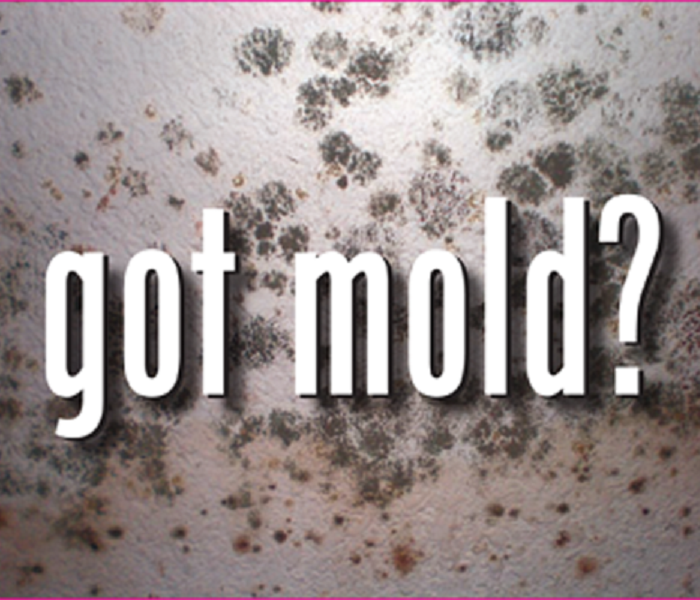 You may have seen news reports that warn about the dangers of “black mold” or “toxic mold”. These reports can be alarming so learn the facts.
You may have seen news reports that warn about the dangers of “black mold” or “toxic mold”. These reports can be alarming so learn the facts.
What it is and How it grows
Mold…it’s everywhere. It’s present inside and outside and while you will never completely eradicate mold spores from your life, there are situations when it can do significant damage. From compromising the integrity of your structure, (yes, it can do serious damage to sheetrock and other porous materials) to causing health issues, mold in the home is nothing to sneeze at. The first question that comes to most people’s minds is how does mold suddenly appear in a home. The answer is rather simple: it doesn’t suddenly appear… with the proper environment,which is water, and a food source, which come in many forms such as simple everyday items like sheetrock, wood molding, paint, cardboard and even leather mold spores grow over a period of time.
Mold is more than just unsightly…there is an odor to it and exposure to high levels of household mold can cause health effects. Though you might be tempted to spray bleach on the affected areas, I wouldn’t recommend doing so, since that can actually increase the damage. Even if you are successful at covering up the unsightly stain, the mold spores spread and continue to grow and travel.
Fact:The Ugly Truth About Mold and How It Can Hurt Your Family and Your Walls.
Feeding Grounds
Mold feeds on moisture. You are most likely to find it in areas like the bathroom, where hot, steamy showers create the perfect environment for the fungus to settle in and grow. That’s why it is important to properly ventilate the bathroom and to install a good exhaust fan.
But moisture can and does appear in other areas of the home as well. The kitchen is also a popular spot for the mold spores to show up. When you boil a pan of water, that steam has to go somewhere, right? Look at the ceiling above the stove and over the sink. Chances are you are going to see a few dark spots there. The stove’s exhaust fan isn’t just for airing out the kitchen when you’ve burnt something beyond recognition. Using the fan will help keep the area dry when you are cooking.
We also find moisture in basements and attics. The key to combating the issue in these areas is to use a good dehumidifier. Homes with central air conditioning systems have the best chance of maintaining a dry environment, even on the most humid days here on Cape Cod, Nantucket and Martha's Vineyard.
But it’s not just summer’s humidity that can invite dampness or moisture into a home. Despite winter’s dry air, moisture can find its way into homes through ice dams and other means, creating the perfect environment for mold spores to form and take root. It’s a good idea to check interior and exterior walls at the end of the winter season. Any dark spots or water stains can be an indication that water infiltrated the home and it needs to be assessed.
Signs and Symptoms
- A stale, musty odor pervading the inside of your home or business. This odor will cling to fabrics, drapes even carpeting, including linens, window treatments, clothes, sometimes even after they have been washed.
- There are speckles of black and white appearing on surfaces in your home, such as on the walls.
- The black marks reappear even after you have cleaned them.
- Cardboard items in your basement, attic, or garage feel damp.
- The wooden parts of the structure of your house are soggy and or are rottening.
Mold Inspection versus Mold Testing
At SERVPRO of Upper Cape Cod and the Islands, inspecting for mold is a standard part of what we do. We know the signs to look for and how to identify a problem. Once we detect signs of mold, we search for the cause. After determining the source of the moisture, we begin the process of fixing the problem.
If there are no visible signs of mold, but there are some symptoms, allergens for example, the homeowner can choose to have their house tested for mold. In this case, we recommend that they call in an unbiased, third party to do the testing. This eliminates any doubt or questions about the test results and makes for a good system of checks and balances. At SERVPRO of Upper Cape Cod and the Islands, we sell our services based on information and not scare tactics.
The Clean Up Process
Mold remediation begins with an assessment of the damage, followed by containing the damage, limiting air movement in the space and a thorough cleaning. The last step in the process is restoration, which can involve any thing from minor repairs to major reconstruction to make it like it never even happened.
At SERVPRO of Upper Cape Cod and the Islands, we use various containment procedures to prevent mold spore spreading and we have specialized filtration equipment that allows our professionals to capture microscopic mold spores out of the air. The mold remediation process depends on the amount of mold growth and types of surfaces on which the fungus appears. We use antifungal and antimicrobial treatments to eliminate mold colonies and to help prevent new colonies from forming. We also clean any furniture, decorative items, curtains and other restorable items affected by the mold. Depending on the level of the mold damage, we also provide reconstruction services, from minor repairs to major projects. Any further details on the process we employ or the products we use to properly clean a mold damage are a trade secret, kept locked in a vault along with the recipe for KFC’s fried chicken and McDonald’s special sauce.
For the record, however, I will say this: the first step in any mold remediation project is to identify the source or cause of the moisture. In some cases, this is easy and in others, it can require a bit of detective work. Believe it or not, sometimes a flood in the house can potentially cause less water damage than an ice dam. When you come home and find two inches of water in your basement because of a burst pipe or failed water heater, you immediately jump into action to get the water damage repaired. However, when you don't see actual water damage from a slow leak from behind a wall it can be a greater problem found as the inspection turns into demo that discovers both the root of the water damage and growing mold colonies.
Fact: Penicillium is a common mold that is found in dust, has a greenish color and a powdery texture. It is characterized by its heavy and musty odor.
Truth can be stranger than fiction
We once received a call from a homeowner whose cat flooded the house. The homeowner had gone away on vacation but had made arrangements for a relative to come in once a week to check on the cat. The owners decided to leave the bathroom faucet turned on just enough for it to trickle a bit of water so the cat could get a drink any time it wanted between the weekly visits. One day, while drinking from the faucet, the cat happened to step on the stopper in the sink, its paw pushing it down so that the sink began to fill with water. A trickling faucet can rack up significant gallons of water over the course of a week. Six days later when the caretaker opened the front door to check on kitty, she found water pouring down the stairs. It wasn’t enough just to dry out the home, we had to ensure that anything that was irreparably damaged, was removed and replaced to eliminate the possibility of any mold issues arising from this feline flooding incident. In this particular case, the cause of the water problem was rather evident and easy to spot.
On another job…this one on Nantucket…the source of the water damage was also fairly obvious. A family had arrived at the house they were renting for their summer vacation, ready and eager to get started on all the fun. One of the children noticed the oversized Jacuzzi in the master bedroom and decided he wanted to take a bath in the luxurious tub. He turned on the water but before he could turn it off, his parents announced that the family was headed to the beach for the day. Filled with excitement and anticipation about going to the shore, the young boy completely forgot about his plans to take a bath and the running water. After a full day at the beach, the family arrived home only to be surprised by the wave of water flowing down the stairs to greet them as they opened the front door.
Pipe breaks, toilets overflowing—those are easy sources of water problems to detect. On other jobs, however, the source of the water damage was not quite so evident. Last year’s series of never-ending snowstorms caused the formation of ice dams and these dams often caused water to back up into homes and buildings…in some cases the owners either didn't notice any signs of water damage or didn't think the water that had seeped in was that bad. When an ice dam causes water to back up into your home, it does so very quietly and discretely…behind a wall, where you can’t see it. By the time it makes its presence known, in the form of peeling paint, soaked carpets, buckled floors, or moldy black marks on the wall under a window or an interior wall, the damage is extensive. But since it is not interfering with your daily living, you shrug and promise to take care of it…one of these days. The danger with this type of damage is that most people…myself included…underestimate the severity of the problem. And the longer you wait to fix it, the more damage it does, eventually compromising the integrity of the structure.
We recently received a call from a customer asking us to clean up what he thought was just a minor and benign water stain issue on his wall in his South Yarmouth home. But when we got there and looked at the problem, we realized the moisture spot was from an ice dam that had occurred the previous winter and the damage done over the course of a year was significant. Mold spores had already formed and the fungus had established itself. The mold damage affected an interior wall in the kitchen and the mold spores spread to a point that the entire kitchen had to be replaced.
In each of these cases, SERVPRO of Upper Cape Cod and the Islands not only cleaned up the damages and did any necessary reconstruction work, we also helped out customers navigate the complexities of the insurance industry.
What to do if you suspect you have a mold problem
- Do not touch or disturb the mold
- Do not blow air across any surfaces with visible or suspected mold growth
- Do not spray bleach or other disinfectants on the mold
- Stay out of affected areas if you have a compromised immune system or allergies as this will heighten these conditions or may create a reaction.
What to consider when choosing a company to remove mold from your home
Choosing a reputable company to treat a mold issue is as important as using the right process to eradicate the mold spores. Look for a company that is experienced and trained in mold remediation. Is the company certified and do they require their employees to receive on-going training to stay on top of the most updated techniques for mold remediation?
At SERVPRO of Upper Cape Cod and the Islands, our professionals are trained and certified and are equipped with the knowledge to restore your property.
- It’s important that the company have insurance and not just worker’s compensation. Any reputable company will hold pollution insurance, since mold can be an environmental issue. Can the company do more than just treat your mold problem? Do they have the resources and licensures to do the necessary reconstruction work or will you have to hire a separate contractor for the part of the project?
- Mold and water damage are often covered under homeowner’s insurance policies. Is the company willing to help you navigate the complexities of the insurance industry?
- Finally, don’t let price drive your decision. The cheapest isn't always the best choice and neither is the most expensive.
We know that there are choices in restoration companies, that’s why we, at SERVPRO of Upper Cape Cod and the Islands, believe that delivering a full complement of services, from the initial assessment of mold spores to the final reconstruction services and everything in between, along with outstanding customer service should be a standard part of every project, no matter the size.
Are Mold Spores Resistant to Bleach in Nantucket Home?
1/26/2016 (Permalink)
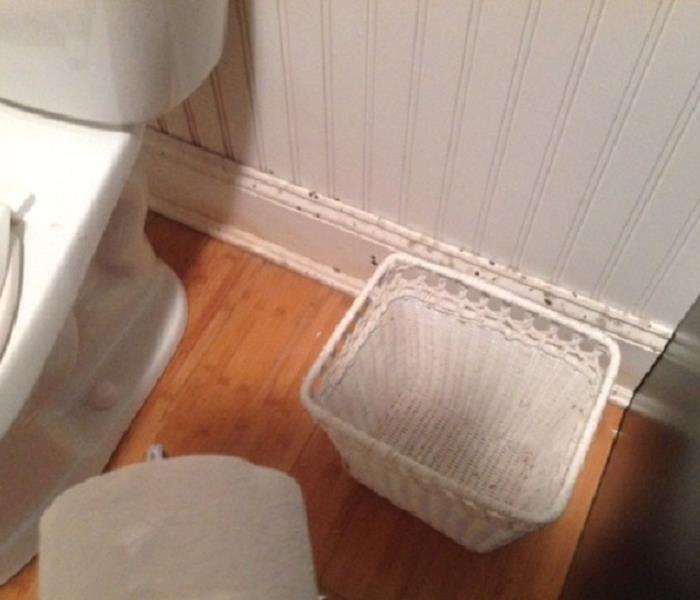 Black mold spores on the baseboard in this bathroom on Nantucket, MA. Will using bleach kill this mold? The answer may surprise you.
Black mold spores on the baseboard in this bathroom on Nantucket, MA. Will using bleach kill this mold? The answer may surprise you.
Recently we received a call from a caretaker on Nantucket because they noticed some mold growing on the baseboard in one of the bathrooms and they wanted to know if bleach would kill the mold spores. Unfortunately, I had to give him the bad news that bleach will not kill mold spores.
Then I followed by explaining that the idea that bleach kills mold spores is one of those myths that has made its way into the do-it-yourself community, leading homeowners and property managers to believe that they can actually kill a mold problem by spraying a bleach solution onto a wall and then wiping it clean. But while the area appears to be clean and rid of the black fungus on the surface, this particular method actually makes the situation worse.
When mold and bleach interact, the mold spores react as if they are being attacked. Spraying the fungus down with bleach causes the mold to shoot off spores to protect itself. So as you are wiping the surface, you are actually spreading the mold spores further out. If the cloth is used in other areas of the home, it can spread the mold to areas that were unaffected (otherwise knows as cross contamination).
Mold thrives on moisture, and since the primary component of bleach is water, the solution actually feeds the fungus rather than kills it. Another reason bleach is no match for mold is because its chemicals, which include chlorine, do not penetrate through the porous areas of the sheetrock or wood where the deep roots of the mold spores are located.
Still another reason not to use bleach to combat a mold problem is because the solution is highly acidic, which can threaten the integrity of porous materials. The acidity levels in bleach wreak havoc on the fibers that compose most home building materials such as drywall and baseboard. And not only will the bleach compromise the integrity of the material, it will spread the mold spores to otherwise unaffected areas. Because this damage is occurring beneath the surface, it goes unseen and unnoticed.
While bleach can erase the unsightly black marks of mold spores on the surface, the fungus is still present in the wall. Mold has deep roots and can permeate to the outer areas of the wall, as it seeks out moisture and a food source. Since bleach can only clean up the ugly surface marks and not completely kill the roots, it is not a recommended solution for mold remediation.
SERVPRO of Upper Cape Cod & The Islands never uses bleach on any of its mold remediation projects. Our professionally trained crews understand the problems that can arise out of using bleach on mold spores. With years of experience responding to property owners with mold in their homes or businesses, handling mold projects throughout Massachusetts, our staff can properly and completely clean up any mold situation with the right products and equipment. As a certified mold remediation company, SERVPRO of Upper Cape Cod & The Islands requires our staff to be trained and able to explain the different types of methods that can be used to clean up mold for our customers. We never sell our services based on fear but rather on information. If you need any help with eradicating a mold issues please feel free to contact us for an estimate.
Mold...the ugly truth for basements on Martha's Vineyard
11/14/2015 (Permalink)
 The Ugly Truth About Mold
The Ugly Truth About Mold
The best that can be said about mold is that it helped in the discovery of penicillin. Other than that it is a rather unsightly fungus that can do serious damage to a home or building until a mold remediation team is called in.
Sure, we have all seen some small colonies of black mold creeping along the walls, especially in bathrooms. Let’s face it…where there’s water there’s mold. But there are times when we are blissfully unaware that water has made its way into our home… providing the perfect breeding ground for a cluster of spores to grow, spread, and travel, slowly decaying the structure behind the walls, the ceilings, or floors.
Last year’s series of never-ending snowstorms caused the formation of ice dams and these dams often caused water to back up into homes and buildings…in some cases the owners didn't think the water had seeped in was that bad.
Damp and moist conditions are the perfect conditions for growing mold, which can grow virtually anywhere— in basements, behind walls in framing, in carpet pads, and in the carpet itself. Moisture inside a home will definitely lead to mold and the only way to rid the building of the fungus is to call in a mold remediation team.
There is a difference between mold removal and mold remediation. The most important thing to understand is that mold is everywhere and it is impossible to completely get rid of it. My team at SERVPRO of Upper Cape Cod and the Islands understands mold and therefore is experienced with the mold remediation process. This process begins with an assessment of the damage, which is followed by containing the damage, limiting air movement in the space and a thorough cleaning. The last step in the process is restoration, which can involve minor repairs to major reconstruction to make it like it never even happened.
Mold is more than just unsightly…there is an odor to it and exposure to high levels of household mold may cause health effects. Though you might be tempted to spray bleach on the affected areas, I wouldn’t recommend doing so, since that can actually increase the damage. Even if you are successful at covering up the unsightly stain, the spores continue to grow, and the mold continues to travel.
Here are some valuable tips for dealing with a mold problem.
- Don’t touch or disturb the mold.
- Don’t blow air across any surfaces with visible or suspected mold growth.
- Don’t spray bleach or other disinfectants on the mold.
- Stay out of affected areas.
Making A Difference in Wareham, MA
9/18/2015 (Permalink)
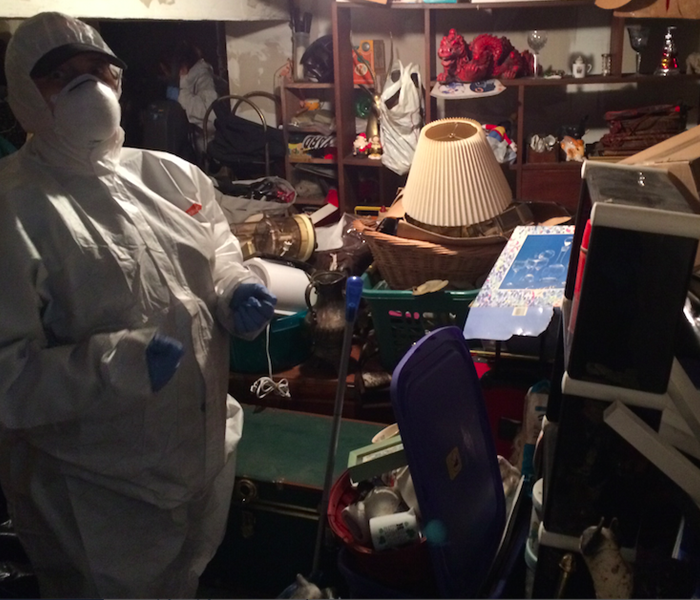 SERVPRO of Upper Cape Cod & the Islands was called to clean a home that had a furnace malfunction and discovered hoarding conditions.
SERVPRO of Upper Cape Cod & the Islands was called to clean a home that had a furnace malfunction and discovered hoarding conditions.
The best we can hope for in life is that we do what we love and love what we do. One of the things I love most about my job is that it offers me the opportunity…. each and every day….to step in and help a fellow human being in need. That was the case a few years ago when we received a call to clean up a puff back from a furnace…. a rather routine service.
The moment we stepped into the small home, we knew this was going to be a complicated job. The homeowner had done extensive traveling, and collected a significant number of figurines, memorabilia and books. Though she had downsized from a larger home to a smaller one, she had not downsized the contents of her house. Furniture, books, and lots of small items filled her cottage, leaving just a narrow aisle to get from one room to another. Without judgment, I immediately recognized that our customer suffered from a condition called hoarding. Working with a family member, I suggested that since we had to clean all of these items, which had been affected by the soot from the puff back, that we neatly and respectfully box up any unnecessary things for daily living so that they could be stored in the attic. We reduced the contents in her living space by about 70 percent, allowing our client to hold on to her treasured possessions without letting them interfere with the quality of living in her home.
During the clean up, we noticed the basement was riddled with mold—another health hazard to our customer. I immediately called the insurance company told them the situation and got approved so that we could clean up another potential health hazard for this elderly woman. By the time we had finished the job, we had cleaned and organized our customer’s home so that it was a safe and healthy space for her to enjoy her life and the things that bring her joy. I feel so lucky to be in a position to do that for people and I consider it one of the many benefits of my job. I am sure that everyone, no matter what their career is, has a memory of when they left work at the end of the day feeling like they made a difference in someone's life. Please feel free to share your story—I would love to hear it!
Keeping Cool When The Dew Point Rises
8/7/2015 (Permalink)
Given this past winter's record setting snow totals, it's difficult to complain about the heat. But as the dog days of summer arrive, it can be hard not to gripe. Hazy, hot, and humid causes more than just bad hair days.... high dew point levels can affect the well-being of your house. Humidity can take its toll on the outside and inside of a home and homeowners need to take precautions to prevent or at least mitigate the damage that moisture can have on a home and its contents. A central heating and cooling system or a whole house dehumidifier system will go a long way in preventing the damage that moisture can cause. But even with these systems, mold spores can find their way into a home. While some mold around the shower is to be expected, when there are multiple colonies of the small black spots, it may be time to call in the experts. Besides being unsightly, these spores can cause health effects. While household bleach will temporarily eradicate the spores, it is not a permanent fix. The spores are a bit like a dandelion...you can get rid of the yellow flower but if the root system is there, it is going to come back. Having grown up on Cape Cod, owners of SERVPRO of Upper Cape Cod & the Islands Bill and Beth Russell understand that coastal communities like the Cape and Islands are especially prone to high humidity and their team of experts are well adept at battling this problem. The professionals at SERVPRO will not only eradicate the problem, the team can offer advice to prevent issues in the future. When the dew point rises and small black spots begin to show up in areas such as the bathroom, kitchen, or other areas of the home, call the experts at SERVPRO of Upper Cape Cod & the Islands to do the job right.
Trust Your Locally Owned Company with National Resources
We are proud to serve our local communities:
- Sandwich, MA
- Falmouth, MA
- Bourne, MA
- Sagamore Beach, MA
- Buzzards Bay, MA
- Martha’s Vineyard, MA
- Nantucket, MA
- Pocasset, MA
- East Sandwich, MA
- Vineyard Haven, MA
Got Mold? The Do's & Do Not's Of Mold Remediation.
7/17/2015 (Permalink)
When a home suffers a water damage event, a mold infestation can quickly arise and spread throughout a home in 48-72 hours. Because mold can produce allergens and irritants, you will want a professional that has training and experience to properly resolve the mold infestation. If you suspect that your Sandwich home or business has a mold problem, SERVPRO of Upper Cape Cod and The Islands can inspect, assess and remediate your property.
Here are examples of some Do's and Do Not's Of Mold Remediation:
- Try not to disturb mold colonies after you've located them. Air motion will send millions of viable spore into the air, cross-contaminating the rest of the room/structure. In other words...no fans!
- Trying to kill mold with bleach or other fungicides does not remove the toxins from the air. A dead spore will continue to give off toxins until it is removed.
- Mold will grow as long as there is enough moisture and a food source. Mold spores can stay dormant for up to 10 years until the right conditions can stimulate the growth.
- Do not think that mold won’t hurt you. Mold is an airborne pathogen and as such it can seriously harm your health
- Sealing and painting over mold does not kill the mold or remove the toxins. It is only a short-term fix while poor health symptoms will continue.
- Make sure to wear a respirator with P100 hepa filtration cartridges, protective eye wear, gloves, long sleeve shirts and long pants when handling and/or examining mold. This is for your protection!!!
- And finally, do call a certified mold removal and remediation professional like SERVPRO Upper Cape Cod & The Islands to get a professional assessment of your mold issues
We specialize in water and mold damage restoration, the cornerstone of our business. We have the training and expertise to safely handle any mold situation.
- Applied Microbial Remediation Specialist
- Water Damage Restoration Technician
- Applied Structural Drying Technician
We live and work in this community too; we might even be neighbors. As a locally owned and operated business, SERVPRO of Upper Cape Cod and The Islands is close by and ready to help with your mold-damaged property. We are proud to be an active member of the community and want to pitch in and help make our community the best it can be.
We are proud to serve our local communities:
- Sandwich, MA
- Falmouth, MA
- Bourne, MA
- Sagamore Beach, MA
- Buzzards Bay, MA
- Martha's Vineyard, MA
- Nantucket, MA
- Pocasset, MA
- East Sandwich, MA
- Vineyard Haven, MA
 If you have a mold issue, SERVPRO of Upper Cape Cod and The Islands can inspect, assess, and remediate your property. Here to Help®.
If you have a mold issue, SERVPRO of Upper Cape Cod and The Islands can inspect, assess, and remediate your property. Here to Help®.





 24/7 Emergency Service
24/7 Emergency Service








